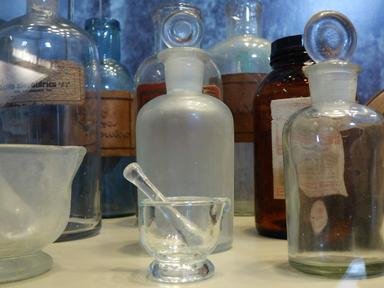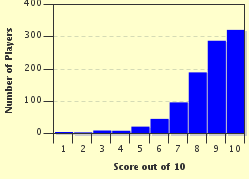Quiz Answer Key and Fun Facts
1. Used as the filament in light bulbs, what element, also known by the name 'wolfram', appears on the periodic table under a letter that doesn't appear in its original Nordic name?
2. When this element is placed into a tube and ionized by an electrical charge it produces a distinct light. What is this noble gas first discovered at the end of the nineteenth century?
3. Devastatingly poisonous to humans, what metalloid is found in both toxic groundwater and in some alloys used for ammunition?
4. With an atomic number of twelve, what is often given as the most abundant alkaline earth metal on the periodic table?
5. Appearing in the Bible under a different name, what nonmetal on the periodic table is typically yellow and is used (in acid form) to refine oil?
6. This element appears with the symbol K because it was originally known as kalium. What is this alkali metal also found in bananas?
7. A silver transition metal (which isn't silver itself), what element at number 27 on the periodic table also lends its name to a shade of blue?
8. Perhaps you know this liquid element as 'quicksilver'. Perhaps you know how dangerously toxic it is. At number 80 on the table, what it its actual name?
9. At number 53 on the periodic table, which halogen (used for thyroid medications and table salt) is the first on the listing to appear naturally as a solid?
10. What element (at number 6 on the periodic table) is regarded as the hardest substance on the planet but can also be found in writing implements?
Source: Author
kyleisalive
This quiz was reviewed by FunTrivia editor
WesleyCrusher before going online.
Any errors found in FunTrivia content are routinely corrected through our feedback system.

